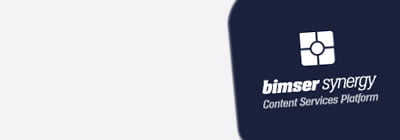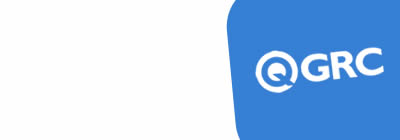GRC: The Foundation of Corporate Integrity and Operational Efficiency
Governance, Risk, and Compliance (GRC) is a critical framework that directly influences an organization’s operational efficiency, business continuity, and corporate reputation. To implement it effectively, global standards and national regulations provide the necessary framework. However, many organizations still manage compliance, internal audit, and risk management processes manually, in fragmented and disconnected systems. As regulatory requirements and internal audit demands continue to rise, an integrated GRC approach has become indispensable. Bimser QGRC acts as a centralized, unified system that enhances governance, risk, and compliance operations—helping organizations move from reactive control to proactive oversight.A Holistic and Strategic Approach: GRC and Its Core Components
GRC is built upon three core pillars—Governance, Risk Management, and Compliance—that work together to ensure organizations are managed holistically and strategically aligned with their objectives.Enterprise Risk Management
As one of the strategic cornerstones of GRC, Risk Management is the process of systematically identifying, analyzing, and controlling uncertainties that can affect an organization’s ability to achieve its goals. From operational disruptions to cybersecurity threats, and from financial instability to reputational damage, today’s organizations face an ever-growing list of risks. Managing them collectively and systematically has become essential for business continuity and corporate trust. Standards such as COSO and ISO 31000 provide structured frameworks to evaluate risks across all dimensions—not only financial, but also operational, reputational, and compliance-related aspects. QGRC supports these frameworks by embedding enterprise-wide visibility and traceability into every stage of the risk lifecycle.Compliance Management
Compliance management ensures that organizations adhere to national and international regulations, industry standards, and internal policies. It includes monitoring regulatory changes, performing audits, and applying internal controls to prevent compliance breaches. Effective compliance management helps organizations minimize risk exposure, protect their reputation, and avoid costly penalties.Internal Audit
Internal Audit is an independent assurance function that evaluates the effectiveness of an organization’s operations, internal controls, and risk management practices. Guided by international standards defined by the Institute of Internal Auditors (IIA), internal audits provide transparency, accountability, and confidence in corporate governance structures.A New Era of Governance, Risk, and Compliance: QGRC Solutions
Bimser QGRC unifies governance, risk, and compliance management on a single digital platform. It eliminates fragmented, manual processes and provides centralized visibility and control across the entire organization.Process-Based, Data-Driven Risk Management
QGRC enables organizations to identify, assess, and mitigate financial, operational, strategic, and IT-related risks within a single integrated framework. With QGRC, organizations can:- Systematically identify and categorize risks,
- Create process-based risk scenarios,
- Evaluate frequency and likelihood of scenarios using impact-probability matrices,
- Link potential threats and losses to each scenario,
- Consolidate all data into a unified risk repository to determine the root cause, probability, and potential impact of risks,
- Monitor compliance and ensure auditability of the risk management process.
Fully Integrated Compliance Management
With increasing regulatory complexity, managing compliance manually is no longer sustainable. The Compliance Management Module of QGRC ensures adherence to laws, standards, and internal policies by continuously tracking regulatory changes, managing audits, and automating control mechanisms. Aligned with global standards such as IIA, COSO, ISO 31000, and local regulations, QGRC enables organizations to:- Digitally manage compliance controls, policies, and procedures,
- Assign role-based permissions for viewing, preparing, or approving documents,
- Track all actions with authorization logs for full traceability,
- Automatically notify relevant departments of regulatory updates or compliance risks.
Traceable and Auditable Internal Controls
Internal auditing evaluates and enhances an organization’s activities, processes, and internal control systems to ensure effectiveness and efficiency. It also verifies the accuracy of financial data and ensures compliance with legal regulations and internal policies. The Internal Audit Module in QGRC digitalizes every step of the audit process end-to-end:- Conduct process-based audits prioritized by risk level,
- Manage audit universes and plans in an integrated structure,
- Define internal and external auditors within the system,
- Send automated notifications and reminders for pending actions,
- Define both scored and unscored questions and link them to relevant controls.
The Advantages of QGRC
With QGRC’s integrated structure, your processes are connected to risks, your risks to controls, and your audits to both. This unified system increases organizational visibility, shortens audit cycles, and enhances governance efficiency. Key benefits of QGRC include:- Transparency and traceability
- Real-time data analytics for faster decision-making
- Cost efficiency through process optimization
- Consistent regulatory compliance and adaptability to change
- Proactive risk management
- Advanced reporting and insights
- User-friendly interface and low-code architecture
- Organizational agility
- Legal compliance and integration flexibility
- Fostering a risk-aware corporate culture







